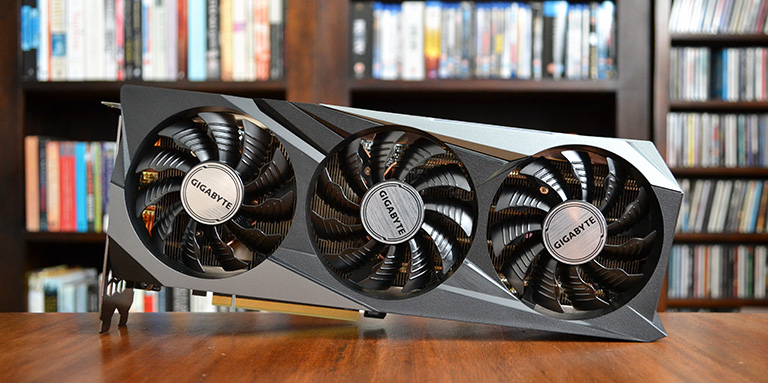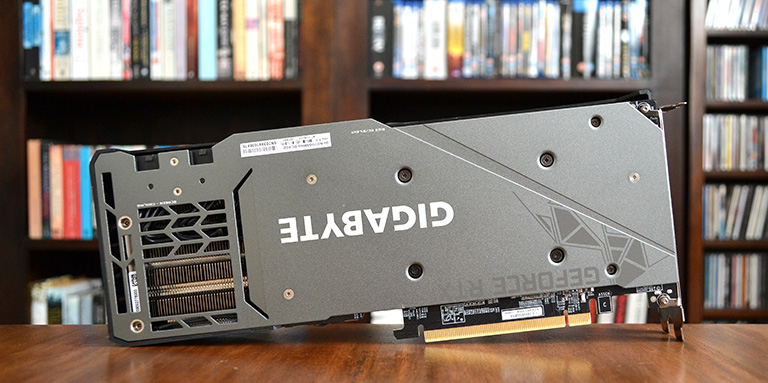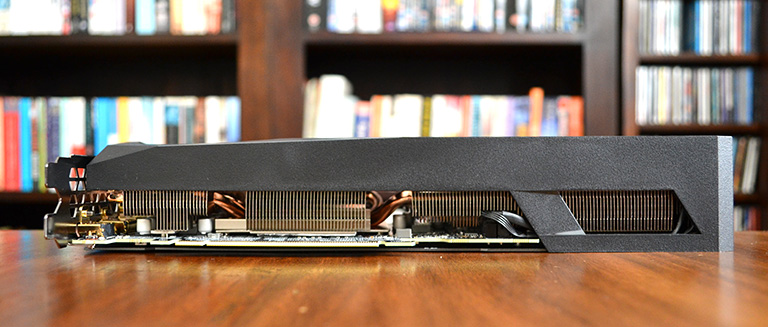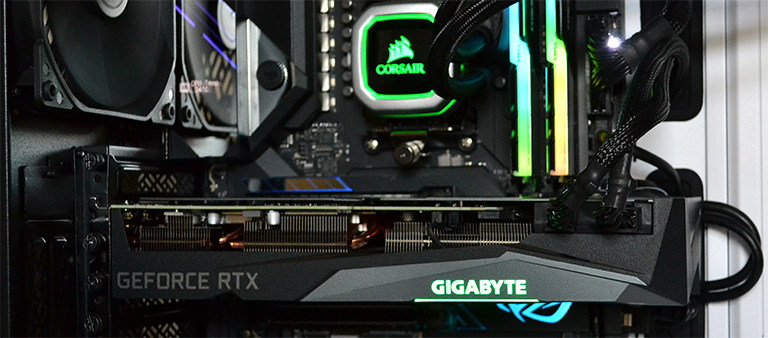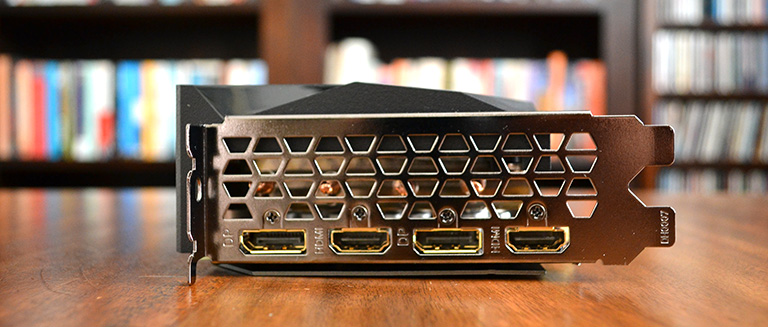Introduction
The GeForce RTX 3070 arrived a couple of days ago. Offering RTX 2080 Ti-like performance from £469, the Founders Edition card is a solid bet for gamers building a premium PC this autumn. Cool, quiet and composed, the underlying Ampere architecture provides enough juice to play the latest games at QHD and UHD resolutions.
Nvidia's partners naturally want in on the act, particularly as stock is supposedly less of a constraint than for RTX 3080 and RTX 3090. Gigabyte is quickly off the mark with five cards.
Gaming OC sits beneath the Aorus Master and above Vision and Eagle models. We've previously seen it on the RTX 3090, though it's understandably more modest in appearance on the RTX 3070 version.
Modest is a relative term, as the measurements of 286mm long, 112mm wide and 51mm high make it comfortably larger than the elegant Founders Edition. As before, the trio of fans switch off at low loads, while the central spinner rotates in the opposite direction to the outer duo, ostensibly to minimise turbulence. Unlike RTX 3090 Gaming OC, however, the three fans are the same size: 80mm.
Gigabyte includes a metal backplate whose main function is to act as a brace for the 970g card rather than provide additional cooling; it touches nothing of note on the rear. The PCB actually finishes by the white model sticker. The rest of the area is left for the heatpipe-infused heatsink. The premise here is to provide through-the-board airflow, but it's not as efficient as it could be due to a mass of wiring being located in the same section.
The card lives up to its OC name by having an 1,815MHz boost clock, compared to 1,725MHz for the FE. These figures aren't as important as real-world speeds; we observed a consistent boost frequency of 1,965MHz here, which is 100MHz higher than FE. Memory remains at a default 14Gbps.
You may recall the FE model pulling 220W at maximum load, but Gigabyte really needs to turn the board wattage wick up to achieve its stated speeds. Logs show the Gaming OC pulls 270W - yup, 23 percent more - for that extra five percent core frequency.
A knock-on effect of having to deal with considerably more power is fan speed that approaches 2,000rpm. We usually like to see closer to 1,500rpm at full chat.
Thankfully, Gigabyte includes a second 'Quiet' BIOS accessed by a small switch on the top. Once active, performance or board power does not change, but the fans do spin more slowly, albeit at the minor expense of temperature. We'll show you exactly how later on.
Speaking of power, the OC is outfitted with a 6+8-pin arrangement. No fancy mini-12-pin connector here.
RGB is limited to the Gigabyte logo on the side. The card's 2.x-slot form factor fits easily into a wide range of chassis.
Our sample exhibited a modicum of coil whine in certain titles, certainly more so than the Founders Edition, though it was not the squeal we've previously had to endure on a few 20-series cards.
Gigabyte goes with dual HDMI and dual DisplayPort for this model, dropping one of the DPs from the RTX 3090. The card has a standard three-year warranty that is extended to four years if registered within 30 days of purchase.
So far, so good, but Nvidia is making it tough for partners to compete with the FE because this model is priced at £539.99, or £70 more than the beautifully built original. Such pricing is consistent with other AIB OC models, however, and it makes any partner card a hard sell.



